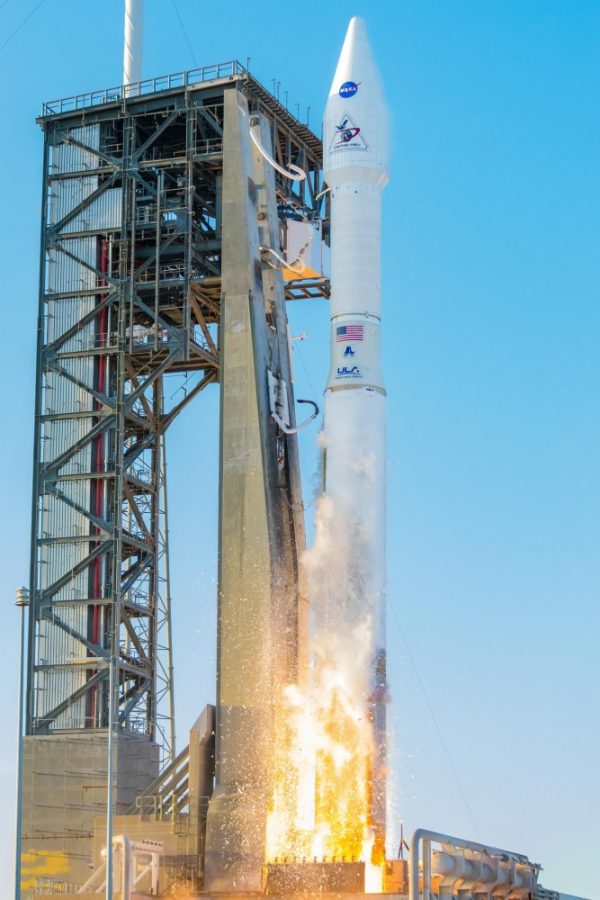The UA continues to make major advancements in the fields of science, engineering and medicine. In case you missed them, here are six UA accomplishments in the realm of science that stole the show this year:
1. Immune system ‘treasure map’
Adam Buntzman , a research assistant professor in the department of medicine , has taken on the daunting challenge of mapping the human immune system.
Buntzman and his team have partnered with CyVerse (a multi-institute computer science consortium) to create a computational program that can accurately depict the thousands of variations within human immune receptors. With the variations in these receptors adding up to more than 100 times the number of ants on Earth, Buntzman and his colleagues may have created the largest map ever.
They hope this map will lead them to discovering new ways to combat autoimmune disorders and create vaccinations against diseases. (https://uanews.arizona.edu/story/grand-challenge-mapping-human-immune-system)
2. UA launches a spacecraft
OSIRIS-REx, the first U.S. spacecraft to return samples from an asteroid, launched from Cape Canaveral on Sept. 8. According to Ed Beshore, deputy principal investigator on the mission, the main objective is to bring back a sample from the asteroid Bennu.
Analyzing the information gained from this mission will allow scientists to predict which asteroids are potentially hazardous for Earth.
“If we can predict far enough in advance, that gives us more time to prepare, to mount a mission and to actually redirect an asteroid that might be headed for us,” Beshore said. “It’s a pretty ambitious mission.”
3. As old as the hills
UA researchers Valerie Trouet, Matthew Meko and Soumaya Belmecheri discovered the oldest living tree in Europe, dubbed “Adonis.”
The Bosnian pine, which is located in the mountains of Greece, is more than 1,075 years old—that’s as old as the vikings. This tree will act as a proxy record for Greek and Balkan climate, allowing dendrochronologists, scientists who study tree rings, to reconstruct the past.
4. 104 new exoplanets discovered
UA astronomers led a team in July of 2016 working with the NASA Kepler spacecraft to discover 104 new planets outside of our solar system. These planets all orbit around a star similar to our Sun, suggesting the possibility for sustaining life. (https://uanews.arizona.edu/story/ualed-team-confirms-100plus-exoplanets-keplers-k2-mission)
5. Advancements in nanotechnology
Katerina Aifantis , an associate professor of civil engineering and engineering mechanics at the UA, received a grant from the United States Department of Energy this year to study within the field of nanotechnology. Her research will involve studying what happens at the nano-scale when two materials bond, Aifantis said.
Nanotechnology can be used to coat solar cells, create hydrophobic buildings and even diagnose cancer. What does this mean for the future of engineering?
According to Aifantis, “We can design materials that have different types of strength just by modifying the interface. You can tune the properties of materials for whatever application you want—for example aerospace or automobiles—just by adding different atoms.”
6. Cinnamon challenge
UA researchers Georg Wondrak and Donna Zhang discovered cinnamaldehyde , the main component in cinnamon, can be helpful in preventing colon cancer. Cinnamaldehyde can activate Nrf2, an antioxidant response that is helpful in preventing chronic diseases, Zhang said. Nrf2 can also remove carcinogens, preventing cancer from developing.
“That’s the whole point of activating Nrf2. Healthy people should have a daily activation of NR2 so it can quickly remove carcinogens from their bodies,” Zhang said.
Zhang and her colleagues are currently conducting more research in hopes of creating a vitamin supplement that will provide enough Nrf2 inducers to make a difference in cancer cell formation.
Follow Hannah Dahl on Twitter.









